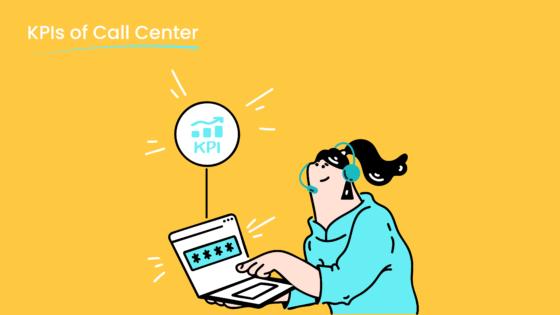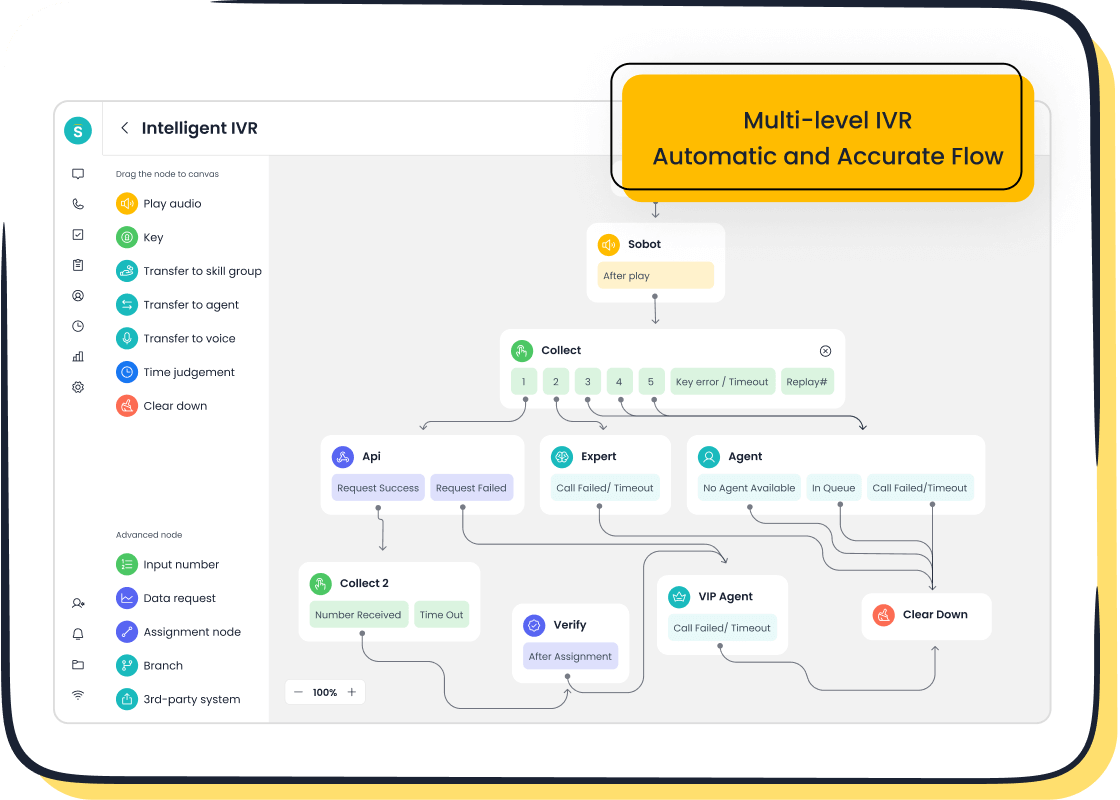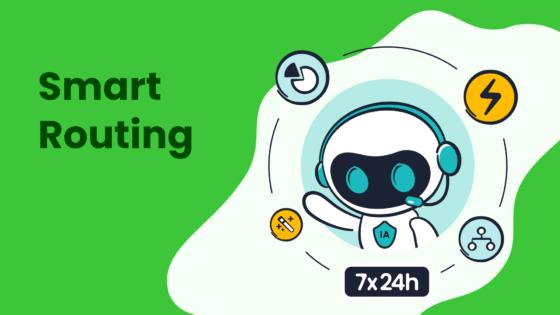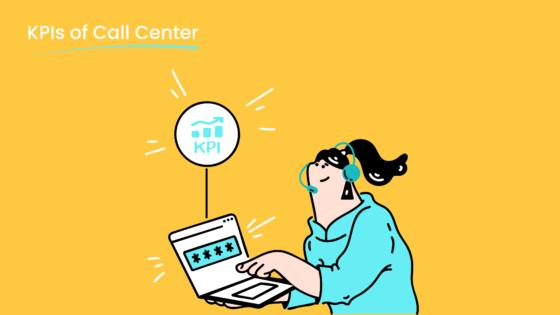Practical Ways to Increase First Call Resolution Efficiency

First call resolution (FCR) refers to resolving customer issues during their initial interaction with your support team. Its importance cannot be overstated in ensuring customer service success. Achieving FCR directly impacts customer satisfaction and operational efficiency. For instance:
- Call centers targeting world-class performance aim for an FCR rate of 80% or higher.
- A 1% improvement in FCR can save a midsize call center $286,000 annually.
- Customers are 95% more likely to stay loyal when their issues are resolved on the first call.
To understand how to measure first call resolution effectively, businesses can utilize tools like Sobot, which can enhance FCR rates and pave the way for exceptional customer support. Improving FCR not only boosts your customer satisfaction score but also strengthens your business outcomes.
What is First Call Resolution and Why Does It Matter?
Definition and Importance of First Call Resolution
First call resolution (FCR) happens when your support team resolves a customer’s issue during their first interaction. This eliminates the need for follow-up calls, saving time for both your team and the customer. FCR is a critical performance metric in call centers, directly tied to customer satisfaction and operational efficiency. Research shows that a 1% improvement in FCR can increase customer satisfaction by 1% and boost transactional net promoter scores by 1.4 points.
A good first call resolution rate reflects well-trained agents and effective systems. Most companies aim for an average FCR rate of 75%. For example, a SaaS company receiving 2,345 calls but resolving only 894 on the first attempt achieves an FCR rate of 38%, which is below average. Tracking this metric helps you identify areas for improvement and enhance customer interactions.
Role of FCR in Enhancing Customer Experience
FCR plays a vital role in improving the customer experience. When customers get their issues resolved quickly, they feel valued and are more likely to remain loyal. High FCR rates indicate that your agents are knowledgeable and equipped to handle inquiries effectively. This not only improves customer satisfaction but also reduces operational costs by minimizing repeat calls.
Improving FCR also enhances your brand’s reputation. Customers appreciate seamless service, and a strong FCR rate demonstrates your commitment to meeting their needs. Across industries, FCR is a key indicator of how easily customers can resolve their issues, making it essential for businesses with dedicated contact centers.
Common Challenges in Achieving High FCR Rates
Achieving a good first call resolution rate can be challenging. Inefficient resource utilization often leads to longer call handling times, which impacts resolution rates. Technology issues, such as slow system loading times, can also hinder agents’ ability to resolve calls effectively. Quality assurance practices play a significant role in maintaining high FCR rates. Without strong quality checks, it becomes harder to ensure consistent performance.
| Challenge Type | Description |
|---|---|
| Resource Utilization Inefficiencies | Inefficient use of resources can lead to longer call handling times, impacting resolution rates. |
| Technology Impacts | Slow system loading times can hinder agents' ability to resolve calls effectively. |
| Quality Assurance Metrics | Effective first call resolution is linked to strong quality assurance practices. |
Reducing the need for follow-up interactions is another hurdle. This requires well-trained agents, robust systems, and a centralized knowledge base. Addressing these challenges can significantly improve your FCR rate and overall customer satisfaction.
How to Measure First Call Resolution Effectively
Using Customer Feedback and Surveys
Customer feedback is one of the most reliable ways to measure first call resolution. Surveys allow you to understand whether customers feel their issues were resolved during the first interaction. According to the SQM Group, the average FCR rate in call centers ranges between 70% and 79%. This means that up to 30% of customers may need to call back to resolve their issues. By gathering feedback, you can pinpoint areas where your team excels and where improvements are needed.
To implement this, ask customers directly if their issue was resolved after the call. Use simple questions like, "Was your issue resolved during this call?" or "Do you need further assistance?" Tracking responses helps you validate FCR rates and identify recurring problems. Tools like post-call surveys or CSAT questionnaires can provide immediate insights into customer satisfaction and resolution accuracy.
Tip: Always mark an issue as resolved only when the customer confirms it. This ensures accurate FCR measurement and avoids premature ticket closures.
Leveraging CRM Data and Analytics
CRM platforms offer powerful tools for measuring first call resolution. By analyzing case data, you can track metrics like resolution rates, response times, and reopen rates. For example, if 1,600 out of 2,000 inquiries are resolved on the first call, your FCR rate is 80%. This calculation provides a clear picture of your team's performance.
CRM analytics also help you identify bottlenecks in workflows. For instance, if reopen rates are high, it may indicate unresolved issues or premature ticket closures. Platforms like Salesforce CRM Analytics eliminate data silos, enabling you to analyze customer interactions comprehensively. Pairing CRM data with QA scorecards further refines your understanding of agent performance and customer satisfaction.

Sobot’s Voice/Call Center integrates seamlessly with CRM systems, offering features like call tracking and real-time analytics. These tools help you monitor FCR rates and optimize workflows. By leveraging CRM data, you can empower your agents with actionable insights, ensuring they have the information needed to resolve issues efficiently.
Monitoring Call Center Metrics with Tools like Sobot Voice/Call Center
Tracking call center metrics is essential for improving first call resolution. Metrics like average handle time (AHT), customer satisfaction scores (CSAT), and AI-driven analytics provide valuable insights into your team's efficiency. For example:
| Metric | Description |
|---|---|
| First-Call Resolution (FCR) | Leading call centers achieve FCR rates above 80%, indicating effectiveness and customer satisfaction. |
| Average Handle Time (AHT) | High AHT can signal inefficiencies or complex customer issues. |
| Customer Satisfaction Scores (CSAT) | Well-run centers maintain CSAT around 85%, reflecting strong performance in issue resolution. |
| AI-driven analytics | Reduces AHT by consolidating data and guiding agents for efficient resolutions. |

Sobot Voice/Call Center offers advanced tools for monitoring these metrics. Its intelligent IVR system routes calls efficiently, while AI-powered analytics provide real-time insights into agent performance. Features like call tracking and global number availability ensure seamless operations, helping you achieve higher FCR rates.
By using tools like Sobot, you can monitor trends, address issues proactively, and refine your processes. Regularly reviewing metrics ensures your team stays aligned with customer expectations, ultimately boosting satisfaction and loyalty.
Practical Tips for Improving First Call Resolution

Set Clear Benchmarks and Customer-Centric Goals
Establishing benchmarks is the first step in improving first call resolution. Analyze your call center’s performance over the past 30 to 60 days to determine your current first call resolution rate. This baseline helps you track progress and identify areas for improvement. For example, if your FCR rate is 65%, aim to increase it by 5% within the next quarter. Setting measurable goals ensures your team stays focused on delivering better outcomes.
Customer-centric goals are equally important. Metrics like Customer Satisfaction (CSAT), Customer Effort Score (CES), and Net Promoter Score (NPS) provide valuable insights into how well your team meets customer needs. A high CSAT score often correlates with a good first call resolution rate, while a low CES indicates that customers find it easy to resolve their issues. Use these metrics to align your objectives with customer expectations.
| Metric | Description | Impact on FCR Outcomes |
|---|---|---|
| Customer Satisfaction (CSAT) | Measures customer satisfaction with products/services through surveys. | High CSAT correlates with improved FCR rates. |
| Customer Effort Score (CES) | Indicates how easy it is for customers to resolve issues. | Lower effort leads to higher FCR. |
| Net Promoter Score (NPS) | Gauges customer loyalty based on likelihood to recommend. | Higher NPS is associated with better FCR performance. |
By setting clear benchmarks and focusing on customer-centric goals, you can create a roadmap for improving first call resolution and enhancing the overall customer experience.
Train Agents with Comprehensive Programs
Agent training plays a pivotal role in achieving a good first call resolution rate. Equip your team with the knowledge and skills they need to handle various scenarios effectively. Comprehensive training programs should include ongoing coaching, role-playing exercises, and scenario-based learning. These methods help agents bridge knowledge gaps and build confidence in resolving customer issues.
For example, training sessions can focus on active listening, problem-solving, and using tools like Sobot Voice/Call Center. This platform provides agents with a unified workspace and real-time analytics, enabling them to access customer information quickly and resolve issues efficiently. Continuous training ensures your team stays updated on best practices for improving first call resolution.
Tip: Regularly evaluate agent performance through quality assurance (QA) processes. Use call recordings and customer feedback to identify areas for improvement and tailor your training programs accordingly.
Effective agent training not only boosts first contact resolution but also enhances customer satisfaction. Well-trained agents can handle inquiries with confidence, reducing the need for follow-up calls and improving the overall customer experience.
Leverage AI and Automation Tools, Including Sobot Voice/Call Center
AI and automation tools are game-changers for improving first call resolution. These technologies analyze 100% of customer interactions, identifying patterns and repeat call drivers. For instance, AI-powered analytics can reveal that a specific issue accounts for 20% of repeat calls. With this insight, you can address the root cause and reduce repeat interactions.

Sobot Voice/Call Center offers advanced features like intelligent IVR, AI-powered Voicebot, and smart call routing. These tools streamline call handling and ensure customers are directed to the right agents. The platform’s real-time monitoring and analytics provide actionable insights, helping your team resolve issues on the first call. Additionally, Sobot’s AI capabilities assist agents by suggesting solutions during live interactions, enhancing their efficiency.
Reducing repeat calls not only improves first call resolution rates but also saves costs. Studies show that the average customer service call costs between $2.70 and $5.60. By minimizing repeat calls, you can reinvest these savings into further enhancing your customer service operations.
Note: Customers with low-effort experiences are more likely to remain loyal. Only 9% of such customers report being disloyal, compared to 96% of those with high-effort experiences. AI tools like Sobot Voice/Call Center help you create low-effort experiences, boosting customer satisfaction and loyalty.
By leveraging AI and automation tools, you can optimize your call center operations, improve first call resolution, and deliver a seamless customer experience.
Maintain a Centralized Knowledge Base for Agents
A centralized knowledge base acts as the backbone of efficient call center operations. It provides agents with instant access to accurate and up-to-date information, enabling them to resolve customer issues quickly and confidently. When agents have a reliable repository of resources, they can avoid delays caused by searching for answers or escalating calls unnecessarily.
Statistics highlight the importance of a centralized knowledge base in achieving higher first call resolution rates:
| Metric | Value |
|---|---|
| Industry standard FCR rate | 70% - 79% |
| World-class FCR rate | 80% or higher |
| Percentage of call centers achieving world-class FCR | 5% |
| Decrease in training time | 50% |
These figures demonstrate that only 5% of call centers achieve world-class FCR rates, emphasizing the need for tools that streamline information access. A well-maintained knowledge base not only boosts resolution rates but also reduces agent training time by 50%, allowing new hires to become productive faster.

Sobot’s solutions, such as its Voice/Call Center platform, integrate seamlessly with centralized knowledge bases. The unified workspace feature ensures agents can access customer data and relevant resources in real time. This integration minimizes the risk of errors and enhances the speed of issue resolution. For example, when a customer calls about a product issue, the agent can instantly retrieve troubleshooting guides or FAQs from the knowledge base, resolving the problem on the first call.
Tip: Regularly update your knowledge base to reflect new products, services, and customer feedback. Outdated information can lead to incorrect resolutions and lower FCR rates.
By maintaining a centralized knowledge base, you empower your agents to deliver consistent and efficient service, ultimately improving customer satisfaction and loyalty.
Implement Skill-Based Routing for Efficient Call Handling
Skill-based routing revolutionizes call handling by connecting customers to the most qualified agents. This approach ensures that inquiries are addressed by agents with the expertise to resolve them efficiently, reducing the need for transfers or repeated explanations.
The measurable impact of skill-based routing includes:
| Benefit | Description |
|---|---|
| Efficient Call Handling | Customers are connected to the most qualified agent, reducing transfers and repeated explanations. |
| First Call Resolution (FCR) | Higher resolution rates on the first contact due to intelligent routing based on skills. |
| Reduced Agent Stress | Agents handle inquiries they are familiar with, preventing stress from unfamiliar topics. |
Skill-based routing improves first call resolution rates by ensuring that customers interact with agents who understand their specific needs. For instance, a customer calling about a technical issue with a device will be routed to an agent trained in troubleshooting that product. This targeted approach minimizes call handling time and increases the likelihood of resolving the issue on the first attempt.
Sobot’s Voice/Call Center platform incorporates smart call routing powered by AI. This feature automatically directs calls based on predefined rules, such as agent expertise, language preferences, or customer history. The platform’s intelligent IVR system further enhances routing efficiency by guiding customers through customized menus before connecting them to the right agent.
Note: Skill-based routing not only improves customer satisfaction but also reduces agent stress. When agents handle inquiries they are familiar with, they feel more confident and perform better.
By implementing skill-based routing, you optimize call center operations, improve first call resolution rates, and create a more positive experience for both customers and agents.
Best Practices for First Call Resolution in Call Centers

Foster Cross-Department Collaboration
Cross-department collaboration is essential for improving first call resolution. When teams like sales, technical support, and billing work together, they can provide agents with the information needed to resolve customer issues efficiently. For example, if a billing inquiry requires input from the finance team, seamless communication ensures the customer gets accurate answers without needing to call back.
Leaders in the industry achieve an average FCR rate of 76%, compared to 23% for followers. This success often stems from leveraging technology and fostering collaboration. Tools like Sobot Voice/Call Center enable agents to access unified customer data, breaking down silos between departments. By encouraging teamwork, you can enhance customer satisfaction and reduce repeat calls.
Tip: Schedule regular cross-department meetings to address recurring issues and streamline workflows.
Set Realistic Customer Expectations During Calls
Setting realistic expectations during calls is one of the most effective call resolution best practices. When customers know what to expect, they feel more confident in the resolution process. For instance, informing them about wait times or the steps required to resolve their issue can improve their experience.
Managing expectations also boosts FCR metrics. Providing updates on resolution timelines helps customers understand the process and reduces frustration. Studies show that clear communication about wait times and backlogs enhances customer satisfaction. Use tools like intelligent IVR systems to share estimated wait times upfront, ensuring transparency.
Note: Always follow through on the timelines you provide. Consistency builds trust and improves your FCR rate.
Offer Self-Service Options for Common Issues
Self-service options empower customers to resolve simple issues on their own, reducing call volume and improving FCR. Statistics reveal that 69% of customers prefer self-service for straightforward problems, such as resetting passwords or tracking orders. Additionally, 79% expect businesses to offer self-service tools.
Providing resources like FAQs, chatbots, and online troubleshooting guides can significantly enhance customer satisfaction. Sobot’s AI-powered Voicebot, for example, handles repetitive queries, allowing agents to focus on complex cases. This approach not only improves efficiency but also aligns with customer preferences for quick, independent solutions.
Tip: Regularly update your self-service content to ensure accuracy and relevance. Outdated information can frustrate customers and lead to unnecessary calls.
Regularly Review and Refine Call Center Processes
Improving first call resolution (FCR) requires regular reviews of your call center processes. These reviews help you identify inefficiencies and make necessary adjustments to meet customer expectations. By refining workflows, you can ensure your team operates at peak efficiency and delivers better outcomes.
Start by analyzing your call routing system. Inefficient routing often leads to longer wait times and unresolved issues. For example, one call center implemented a Continuous Improvement Framework to address long hold times. They reviewed their processes and gathered customer feedback to pinpoint issues in call routing. After optimizing the system, they reduced wait times by 45% and increased customer satisfaction by 30%. This demonstrates how routine evaluations can significantly improve FCR rates.
You should also monitor agent performance regularly. Use tools like Sobot Voice/Call Center to track metrics such as average handle time and resolution rates. These insights reveal areas where agents may need additional training or support. For instance, if certain agents struggle with specific queries, targeted coaching can help them resolve issues more effectively.
Customer feedback plays a crucial role in refining processes. Encourage customers to share their experiences through surveys or post-call questionnaires. Their input highlights recurring problems and helps you prioritize improvements. When you address these concerns, you not only enhance FCR but also build trust with your customers.
Tip: Schedule monthly process reviews to stay proactive. Regular updates ensure your call center adapts to changing customer needs and maintains high performance.
By consistently reviewing and refining your processes, you create a more efficient call center. This approach improves FCR rates, reduces operational costs, and enhances customer satisfaction.
How Sobot Enhances First Call Resolution Efficiency
Features of Sobot Voice/Call Center for FCR Improvement
Sobot Voice/Call Center offers a suite of features designed to improve first call resolution (FCR) rates. Its intelligent IVR system ensures calls are routed to the right agents, reducing the time spent transferring customers. The unified workspace consolidates customer data, enabling agents to access relevant information instantly. This feature minimizes delays and enhances the accuracy of issue resolution.
The platform also includes AI-powered Voicebot technology, which handles repetitive queries efficiently. This allows agents to focus on more complex issues, improving overall productivity. Additionally, Sobot’s real-time call tracking and analytics provide actionable insights, helping you identify patterns and address recurring problems. These tools empower your team to resolve customer issues on the first call, boosting satisfaction and reducing operational costs.
| Case Study Description | Improvement Metrics |
|---|---|
| Reduced inbound discussion volume by 20% and increased positive feedback to 96% | Significant customer satisfaction improvement |
| Over 80% of answers are correct and over 95% customer satisfaction | Enhanced accuracy and satisfaction |
| 22.2% of customer questions answered independently with a CSAT score of 97% | Increased self-service efficiency |
| 85% of problems solved with 99% customer happiness | High problem resolution rate |
Real-Time Monitoring and Analytics for Better Decision-Making
Real-time monitoring and analytics are critical for improving FCR rates. Sobot Voice/Call Center provides live dashboards and intelligent alerts that help you identify customer issues as they arise. This enables immediate intervention, ensuring problems are resolved quickly and efficiently.
Supervisors can also use real-time analytics to monitor customer sentiment during calls. If frustration is detected, they can step in to guide agents or offer solutions. This proactive approach improves customer satisfaction and increases the likelihood of resolving issues on the first call. Additionally, FCR rates help you evaluate the effectiveness of scripts and training programs, ensuring your team consistently delivers high-quality service.
Case Study: How Sobot Helped OPPO Achieve High FCR Rates
OPPO, a global leader in smart devices, partnered with Sobot to enhance its customer service operations. By implementing Sobot’s chatbot and ticketing system, OPPO achieved an 83% chatbot resolution rate and a 94% positive feedback rate. The integration of global customer channels and business systems streamlined operations, reducing data fragmentation and improving service efficiency.
Sobot also helped OPPO optimize its knowledge base, cutting maintenance efforts by 90%. This allowed agents to access accurate information quickly, improving their ability to resolve issues on the first call. As a result, OPPO saw a 57% increase in repurchase rates, demonstrating the impact of Sobot’s solutions on customer satisfaction and loyalty.
First call resolution (FCR) remains a cornerstone of call center success. It reduces repeat calls, improves customer satisfaction, and boosts agent efficiency. For example, increasing FCR rates from 70% to 80% can lower repeat calls by 1,000 daily and enhance customer satisfaction by 15%. These improvements also reduce agent turnover by 10%, creating a more stable and productive workforce.
To achieve these results, focus on actionable strategies like skill-based routing, centralized knowledge bases, and AI-powered tools. Platforms like Sobot Voice/Call Center simplify workflows, enabling agents to resolve issues faster and more accurately. With features like intelligent IVR and real-time analytics, Sobot helps call centers deliver exceptional service while improving operational efficiency.
Explore Sobot’s solutions to transform your call center into a hub of customer satisfaction and loyalty. Visit Sobot Voice/Call Center to learn more.
FAQ
What is a good first call resolution (FCR) rate?
A good FCR rate typically falls between 70% and 79%. World-class call centers aim for 80% or higher. Achieving this benchmark reflects efficient processes, well-trained agents, and customer satisfaction. Regularly monitoring and improving your FCR rate ensures better outcomes for your business.
How can you calculate your FCR rate?
Divide the number of issues resolved on the first call by the total number of calls received. Multiply the result by 100 to get the percentage. For example, resolving 800 out of 1,000 calls gives you an FCR rate of 80%.
Why does FCR impact customer satisfaction?
Resolving issues on the first call saves customers time and effort. It shows that your team values their concerns and provides efficient solutions. High FCR rates reduce frustration, build trust, and encourage loyalty, directly improving customer satisfaction scores.
How can Sobot Voice/Call Center improve FCR?
Sobot Voice/Call Center offers intelligent IVR, skill-based routing, and AI-powered analytics. These features ensure customers connect with the right agents quickly. Real-time monitoring and a unified workspace help agents resolve issues efficiently, boosting your FCR rate.
What are the common barriers to achieving high FCR?
Barriers include poorly trained agents, fragmented knowledge bases, and inefficient call routing. Outdated technology or slow systems also hinder resolution. Addressing these challenges with tools like Sobot Voice/Call Center can significantly improve your FCR performance.
See Also
Enhancing Call Center Efficiency Through Effective Monitoring
Top Strategies for Effective Call Center Quality Management
Understanding the Efficiency of Call Center Automation
Maximizing Efficiency in Your 24/7 Live Chat Services
Ten Strategies to Improve Customer Satisfaction in Live Chat
